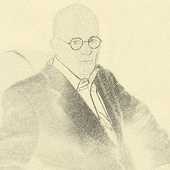Dr. Theodore P. Hill asks his mathematics students at the Georgia Institute of Technology to go home and flip a coin 200 times and record the results, or just go home and fake it. When the results ae turned in Dr. Hill can immediately tell who faked their results and who flipped a coin 200 times. Amazed at how quickly the professor can spot the frauds in the coin tossing experiment, he finally divulges how he is able to figure it out.
Probability predictions are often surprising. In the case of the coin-tossing experiment, Dr. Hill wrote in the current issue of the magazine American Scientist, a "quite involved calculation" revealed a surprising probability. It showed, he said, that the overwhelming odds are that at some point in a series of 200 tosses, either heads or tails will come up six or more times in a row. Most fakers don't know this and avoid guessing long runs of heads or tails, which they mistakenly believe to be improbable. At just a glance, Dr. Hill can see whether or not a student's 200 coin-toss results contain a run of six heads or tails; if they don't, the student is branded a fake.
Dr. Hill is one of a growing number of statisticians, accountants and mathematicians who are convinced that an astonishing mathematical theorem known as Benford's Law is a powerful and relatively simple tool for pointing suspicion at frauds, embezzlers, tax evaders, sloppy accountants and even computer bugs.
Benford's Law is named for the late Dr. Frank Benford, a physicist at the General Electric Company. In 1938 he noticed that pages of logarithms corresponding to numbers starting with the numeral 1 were much dirtier and more worn than other pages.
(A logarithm is an exponent. Any number can be expressed as the fractional exponent -- the logarithm -- of some base number, such as 10. Published tables permit users to look up logarithms corresponding to numbers, or numbers corresponding to logarithms.)
Logarithm tables (and the slide rules derived from them) are not much used for routine calculating anymore; electronic calculators and computers are simpler and faster. But logarithms remain important in many scientific and technical applications, and they were a key element in Dr. Benford's discovery.
Dr. Benford concluded that it was unlikely that physicists and engineers had some special preference for logarithms starting with 1. He therefore embarked on a mathematical analysis of 20,229 sets of numbers, including such wildly disparate categories as the areas of rivers, baseball statistics, numbers in magazine articles and the street addresses of the first 342 people listed in the book "American Men of Science." All these seemingly unrelated sets of numbers followed the same first-digit probability pattern as the worn pages of logarithm tables suggested. In all cases, the number 1 turned up as the first digit about 30 percent of the time, more often than any other.

Comments(1)